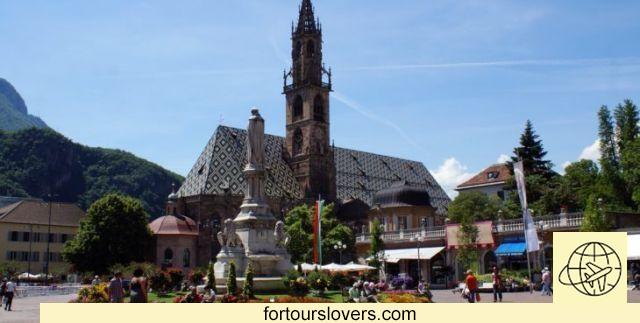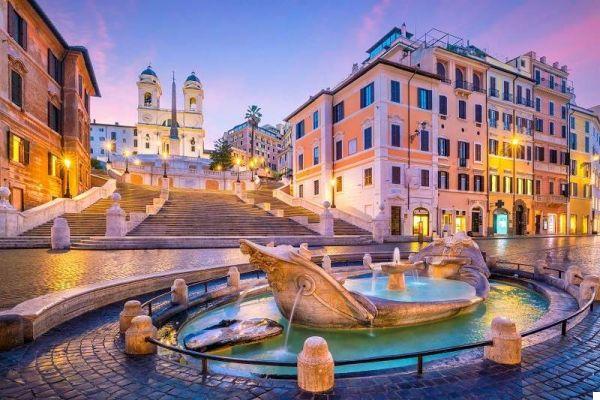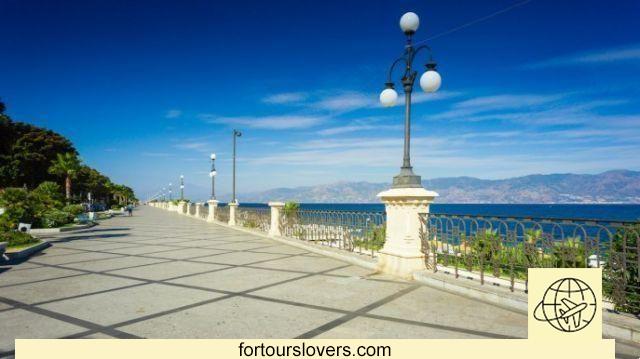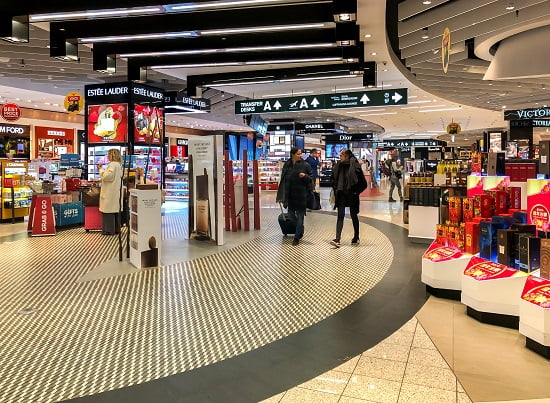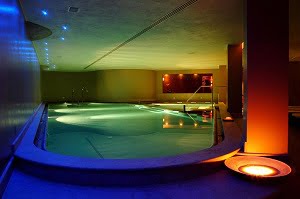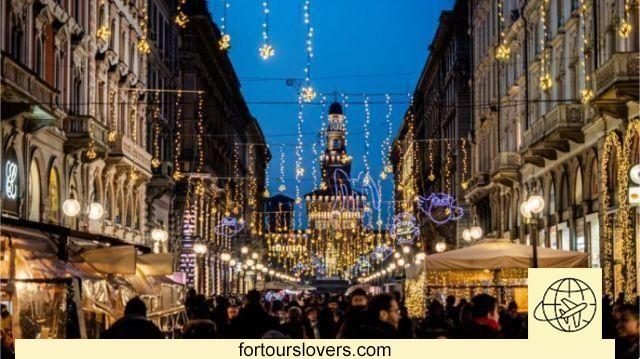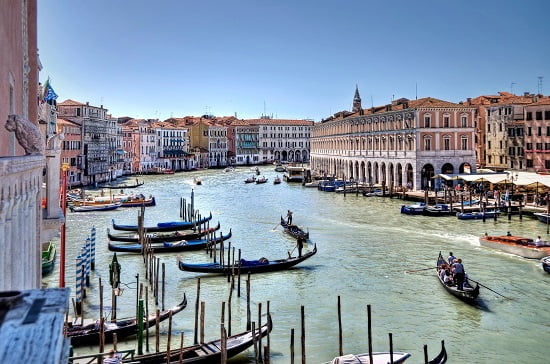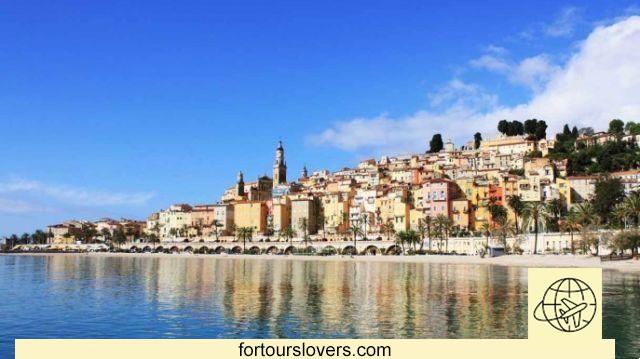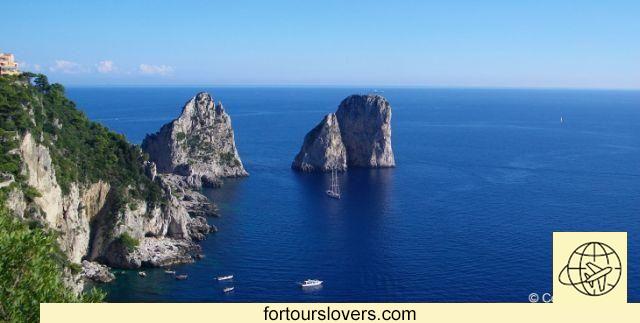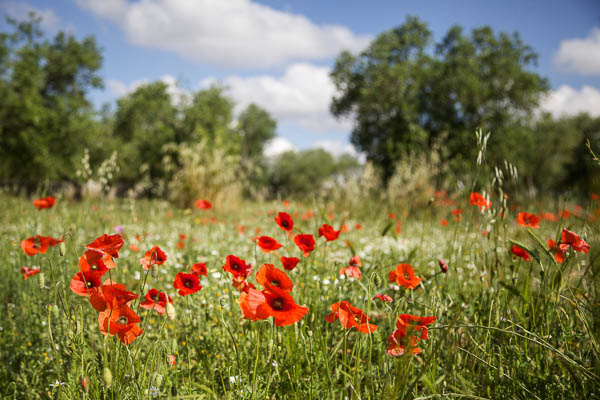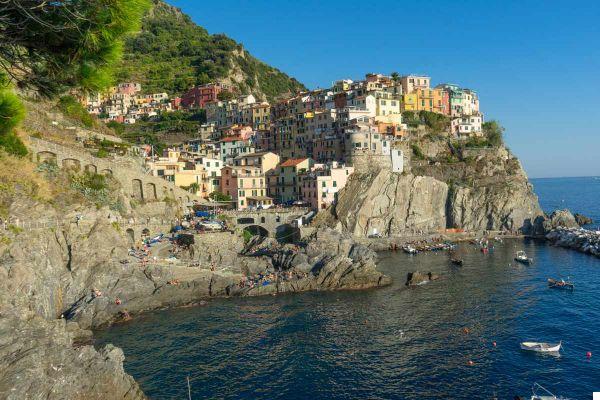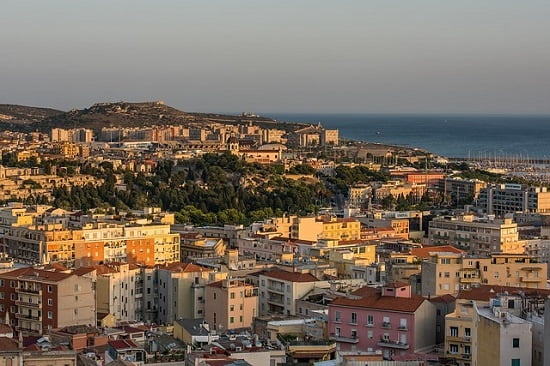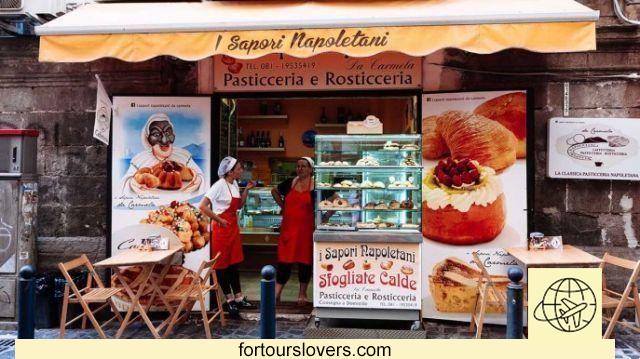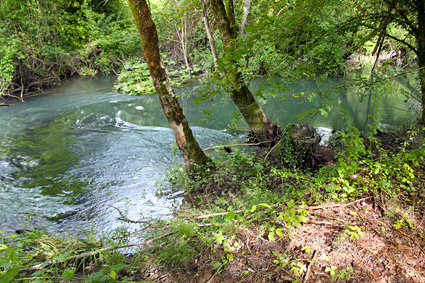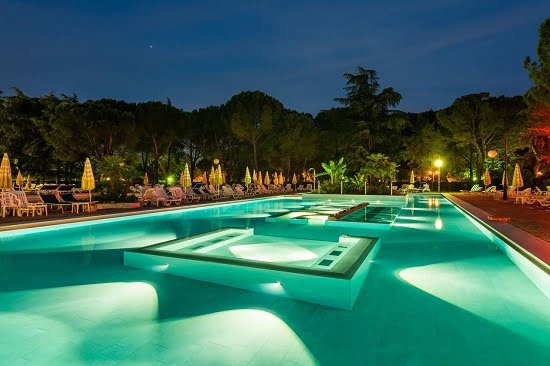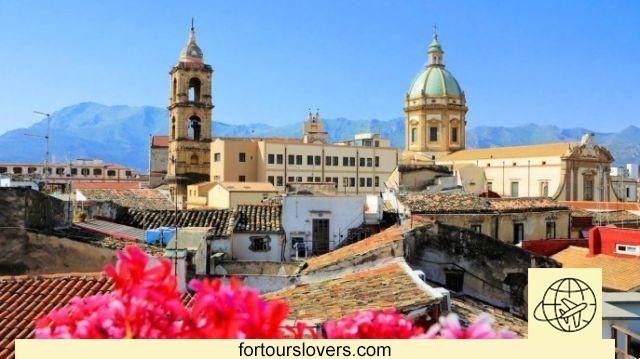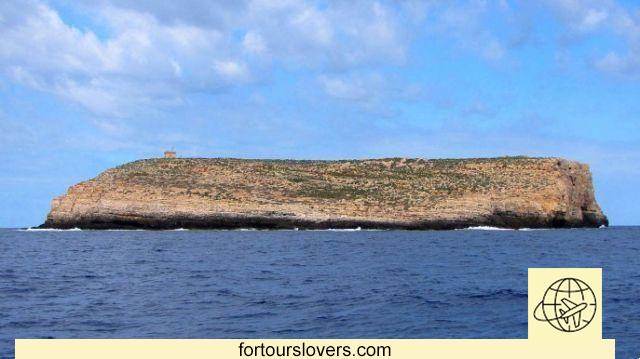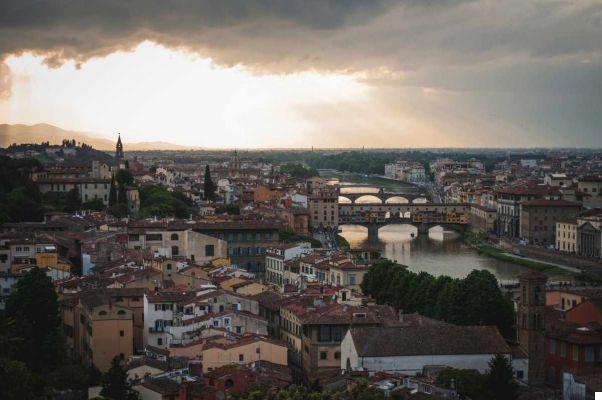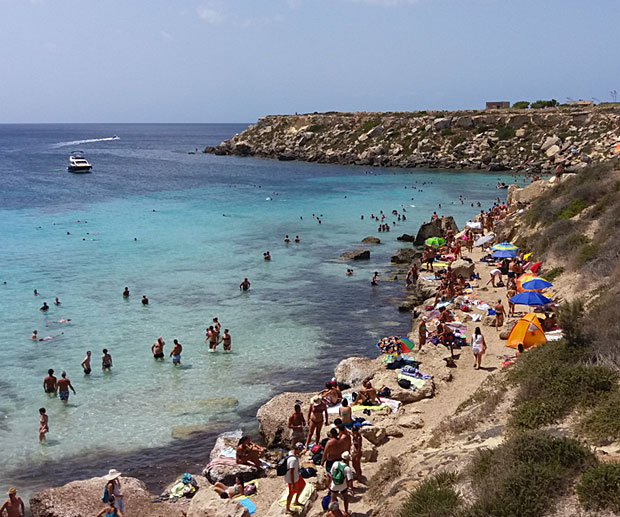Ravenna is an unmissable destination when visiting the region Emilia Romagna. It houses a large number of buildings declared a World Heritage Site by UNESCO, which making it artistically one of the most important cities in Italy. Then you can discover all there is to see in Ravenna, the city of mosaics and Byzantine art.
It is located halfway between Bologna e Venezia and it is a city rich in art, history and culture. It was the capital of the Roman Empire between the XNUMXth and XNUMXth centuries, the capital of the reign of Theodoric King of the Ostrogoths and the capital of the Byzantine Empire in Europe. The magnificence of these periods has left a rich architectural and artistic heritage that we can admire today.
The city is most famous for its incredible mosaics, dating back to the fifth and sixth centuries AD which are among the most beautiful representations of early Christian and Byzantine art in Europe, classified as world heritage by Unesco.
History of Ravenna
The origins of Ravenna date back to the XNUMXnd century BC when the city was colonized by the Roman Empire, although there are already reports of ancient Etruscan settlements in the Po Valley.
Ravenna's fame grew gradually, partly because of his own strategic position. The city was located near the delta of the river Po, the marshes that isolated it from several parts from the mainland served as a natural defense, and at the same time it had direct access to the sea, from where supplies and reinforcements could be received.
Emperor Caesar Octavian Augustus he endowed the city with an important military port in the nearby Classe and built a large hydraulic canal that connected the river Po with the port, a real work of hydraulic engineering.
In 402 AD Ravenna became the capital of the Western Roman Empire. In the city there were magnificent civil and religious buildings entirely covered with mosaics. Among the most important buildings we can also list those built during the reign of Theodoric, king of the Ostrogoths.
Finally Ravenna was capital of the Byzantium empire in Europe. The magnificence of that period left a great heritage of monuments in the city.
What to do in Ravenna: guided tours and other activities
The main attraction of Ravenna lies within its buildings. Undoubtedly, the Byzantine architecture, early Christian art and mosaics from places like the Basilica of San Vitale or the mausoleum of Galla Placidia are the strong point of the city. It is always nice to take a walk and get to know the streets of a city, but in the case of Ravenna, if you do not enter its monuments, you will lose 90% of the experience.
There are several excursions that organize a guided tour of Ravenna, and that include access to all the important monuments that must be seen in the city.
What to see in Ravenna
The city hosts one of the highest concentrations of early Christian and Byzantine art in the world. There are many interesting things and buildings to see in Ravenna, and many of them were declared a World Heritage Site by Unesco in 1996, because they house spectacular works of art, made mainly with small mosaics.
One of the advantages is that most of the main monuments to see in Ravenna can be visited in just one day.
Basilica of San Vitale
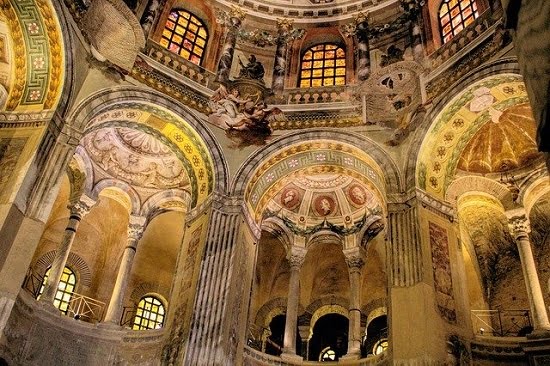
The famous Basilica of San Vitale is located in the city center of Ravenna. The little one is also very close mausoleum of Galla Placidia and National Museum of Ravenna, which we recommend to visit.
Dating back to the Justinian period, the basilica underwent almost no changes until our era. It stands out for its octagonal plan, the splendid Baroque frescoes and an imposing dome and, above all, for the impressive Byzantine mosaics which cover its main altar. The colors are bright.
Of all the mosaics, those in the apse stand out, representing the emperors Justinian and his wife Theodora with their respective courts making offerings to the temple and various scenes from Christ and the Old Testament. Made between 546 and 548, these mosaics are considered thebest example of Byzantine figurative art in Europe.
Mausoleum of Galla Placidia
The Mausoleum of Galla Placidia it is located in the same complex as the Basilica of San Vitale and is surrounded by a beautiful garden. Outwardly it looks very simple and modest but inside it is a real gem. It was built between 425 and 430 to house the tomb of Galla Placidia, sister of Flavius Honorius Augustus, emperor of the Western Roman Empire in 395.
Although small, this XNUMXth century building is a perfect example of the transition from early Christian art to the Byzantine style. The interior is decorated with precious mosaics that mix religious and floral motifs and are among the oldest preserved in Ravenna. The starry blue mosaic vault represented on the ceiling gives the place a mystical atmosphere.
Neonian Baptistery
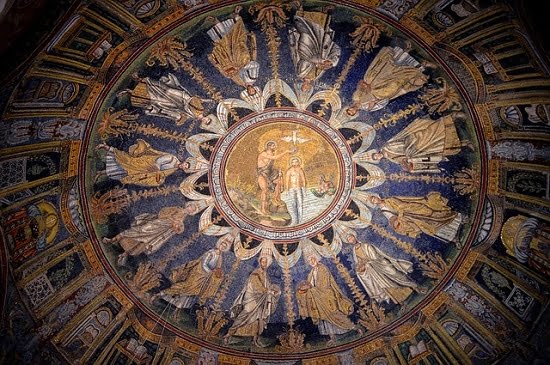
Ravenna has two baptisteries, one dedicated to the Latin faithful of Orthodox worship and the other to the followers of Arianism, both separated by a walk of only 8 minutes.
Il Neonian Baptistery, also called “degli Ortodossi” is one of the oldest buildings to see in Ravenna and its construction dates back to the end of the XNUMXth century. It is located right next to the Archiepiscopal Museum of Ravenna.
The baptistery is built entirely of brick and has a octagonal plant. Inside there is a dome covered with a beautiful mosaic. It is distinguished by its blue and gold tones, and in it we can see the scene of Saint John the Baptist baptizing Jesus in the Jordan River, both surrounded by the twelve apostles.
Archiepiscopal Museum of Ravenna
Next to the baptistery is the Archiepiscopal Museum of Ravenna, which includes four rooms in which various archaeological finds and works of art from various parts of the city are exhibited, including the Throne of Maximian, entirely made of carved ivory.
Inside the old episcopal palace we can also see the spectacular Chapel of Sant'Andrea beautifully decorated with early XNUMXth century mosaics.
Arian Baptistery
The small Arian Baptistery of Ravenna was built by Theodoric in the XNUMXth century. AND the oldest building of the eight sites registered in Unesco. Inside, nothing remains of the stuccoes and ornaments that surely covered the walls.
As in the previous case, inside the dome there is a beautiful mosaic in which once again we see the scene of the baptism of Jesus, accompanied by all the apostles who are all placed around the main scene, this time in greener tones. The level of detail of all these mosaics is impressive.
Basilica of Sant'Apollinare Nuovo
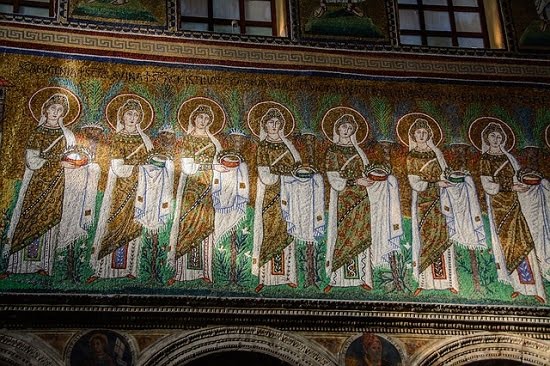
Sant'Apollinare Nuovo is located in the east of Ravenna, near the Palazzo Teoderico and only 12 minutes walk from the Basilica of San Vitale. Built in 505 by the Ostrogothic king Theodoric, known as the Great, who wanted a place of prayer near his palace, this beautiful basilica was originally used as a palatine church, of Arian worship. Later, in 540, it was converted to Catholic worship by the Byzantines.
Like most of Ravenna's monuments, Sant'Apollinare Nuovo stands out for the decoration of its interiors. The side walls of the central nave are all covered with mosaics, the main reason of which is a very long procession of holy martyrs, holy virgins and the Magi towards the altar where Jesus is.
Basilica of Sant'Apollinare in Classe
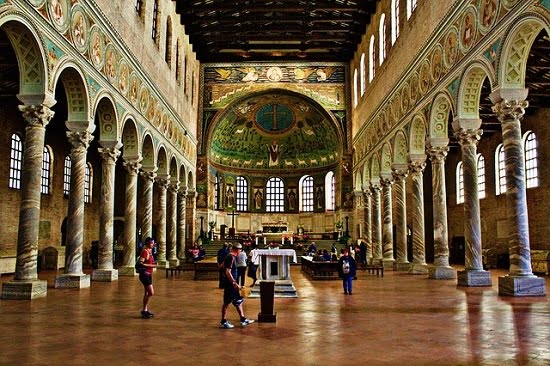
Despite being 5 km from the city, the Basilica of Sant'Apollinare in Classe is one of the most important places to see in Ravenna, defined the greatest example of an early Christian basilica.
To visit it, you need to take bus number 4, which stops right in front of the Ravenna train station. Another option is to take a taxi, but it is much more expensive.
Outside the basilica we find a XNUMXth century bell tower with a cylindrical plan. The building is brick and has three naves, but stands out over the entire apse, decorated with a large mosaic. In it, a large cross appears as a central motif, under which Saint Apollinaris is praying, surrounded by sheep representing his faithful. On the sides of the basilica there are also a series of rather interesting early Christian sarcophagi.
Church of Santa Eufemia
Located on the Via Azeglio, at first glance it seems that there is nothing special about this temple, but what is actually spectacular is found in its basement. In 1993, during the construction of some underground garages, an ancient Roman domus was found, the Domus of the Stone Carpets.
It is one of the most important Italian archaeological sites discovered in recent decades, and one of the main places to see in Ravenna, consisting of 14 rooms located 3 meters below street level. All rooms in the building host numerous mosaics preserved in perfect condition.
The entrance ticket for the “Domus dei Tappeti di Pietra” costs € 4 and the site is open from 10 am.
Center of Ravenna
Ravenna is a small city that can be easily explored on foot. It also has many pretty pedestrian alleys with shops and restaurants. In the center of Ravenna, the things to see (in addition to the Unesco sites of course) are mainly:
Piazza del Popolo, which is the main square of Ravenna and the nerve center of the city. This place dates back to the end of the 1483th century and houses some of the most important buildings in Ravenna such as the Town Hall or the former headquarters of the Banca Nazionale del Lavoro. The square also features a public clock and two Venetian-style columns erected in XNUMX, which display the statues of San Vitale and Sant'Apollinare, patron saint of the city.
Piazza di San Francesco where there is also the church of the same name. This temple belonged to an old Franciscan convent which was suppressed and expropriated by Napoleon's troops in 1810.
Dante's tomb, despite the fact that the poet Dante Alighieri was born in Florence, his remains are now buried in Ravenna, where he died in exile in 1321. The present tomb is a small neoclassical building completed in 1781, inside which is the marble sarcophagus with the remains of the poet.
The Classense library it is one of the most important in Italy. Housed inside the Camaldolese Abbey, it is a real one architectural and artistic jewel. The interior of the halls and corridors of the library are adorned with works by numerous artists made between the sixteenth and eighteenth centuries. Do not miss theGreat Hall decorated with frescoes and paintings by Francesco Mancini and adorned with finely carved statues, stuccos and shelves.
Ticket fares
Tickets for the Basilica of Sant'Apollinare Nuovo, the Neonian Baptistery, the Basilica of San Vitale, the Mausoleum of Galla Placidia, the Museum and the Archbishop's Chapel are purchased together at the ticket office of one of the monuments. You can check timetables and book tickets on Ravenna website.
Full ticket: 10.50 €
Reduced ticket: 9.50 €
The ticket it is valid for 7 consecutive days from the date of issue and entitles you to only one entrance per monument.
The reduced ticket is valid for:
- Italian and foreign students during the school year;
- groups (minimum 20 paying);
- associations and affiliated entities.
Admission is free for:
- Children up to 10 years;
- resident in the Municipality of Ravenna (by showing a valid identification document certifying residence);
- disabled people (with certified disability of more than 74% or white card holders);
- religious, military;
- tourist guides of the Emilia-Romagna Region in the exercise of their professional activity;
- for groups, free admission is reserved for 1 group leader for every 20 paying guests;
- school groups: 1 free teacher for every 10 pupils.
The visitor center, where you get tickets to visit some of the city's attractions, is located near the Basilica of San Vitale, on Via Argentario.
Where sleeping in Ravenna
Ravenna is an excellent base for visiting Emilia Romagna. Thanks to its location it is possible to visit several interesting cities in the region by train or by car like Bologna, Cervia, Ferrara, Rimini and even the small town of San Marino.
Recommended hotels:
Maison of Artists - 700 meters from the Basilica of San Vitale and the Mausoleum of Galla Placidia
Hotel Cappello - a beautiful historic residence in a very central position
Masoli house - housed in a XNUMXth century building and rooms equipped with period furniture
At dad's house - B&B located in a quiet area, yet central and convenient for many of the city's significant monuments
Find and book accommodation in RavennaHow to get around in Ravenna
The city is quite small and the train station is close to the historic center: for this reason we recommend walking, enjoying the beauty of the streets.
In any case, if you prefer to travel by bus, you will find the ATM bus stops Citywide; the ticket costs 1 euro and is valid for 60 minutes.
There are also many cycle paths, which allow you to easily reach any point in the city. Bike rental offices are numerous and prices are moderate.
The tourist office it is located in the city center, near the central square. Here you can find a detailed map of the city and other useful information.




